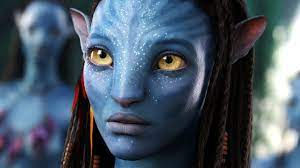Groundbreaking Cinema: Movies That Pushed the Boundaries of Visual Effects
- Jesse Rojas
- Jun 29, 2023
- 2 min read
The evolution of visual effects (VFX) in cinema has been a breathtaking journey. Filmmakers have continuously strived to push the boundaries of what is possible, crafting ever more fantastic and believable worlds on the big screen. Here, we highlight a few iconic films that have reshaped the landscape of visual effects, leaving indelible marks on the film industry and audiences worldwide.
1. "Star Wars" (1977)
George Lucas's original "Star Wars" film transformed the film industry in numerous ways, not least of which was the use of visual effects. Lucas founded Industrial Light & Magic (ILM), a VFX company that pioneered many techniques such as motion control photography, where a computer-controlled camera allowed for repeatable, complex movements. These advancements brought space battles and alien worlds to life in a way audiences had never seen before.
2. "Jurassic Park" (1993)
Steven Spielberg's "Jurassic Park" was a game-changer for VFX, using a combination of animatronics and computer-generated imagery (CGI) to create lifelike dinosaurs that astounded audiences. The film's success propelled CGI to the forefront of visual effects techniques, revolutionizing the industry.
3. "The Matrix" (1999)
"The Matrix," directed by the Wachowski siblings, introduced audiences to "bullet time"—a visual effect that creates the illusion of extreme slow motion while the camera seemingly moves at normal speed. This was achieved using a combination of slow-motion photography and CGI, resulting in sequences that continue to be revered and imitated.
4. "Lord of the Rings: The Two Towers" (2002)
The second installment of Peter Jackson's "Lord of the Rings" trilogy introduced the character of Gollum, a creature brought to life by actor Andy Serkis through motion-capture technology. This film marked a significant leap in the believability of CGI characters, combining Serkis's performance with cutting-edge VFX to create a character that was both emotionally resonant and visually convincing.
5. "Avatar" (2009)
James Cameron's "Avatar" represented a massive leap forward in motion-capture technology, creating an entirely digital world populated by the film's Na'vi characters. It also pushed the boundaries of 3D filmmaking, utilizing a new generation of 3D cameras to give depth and realism to the alien world of Pandora.
6. "Inception" (2010)
Christopher Nolan's "Inception" cleverly blended practical effects with digital enhancements to create its mind-bending world. The film's gravity-defying hallway fight scene used a rotating set while VFX were used to create the film's folding cityscapes and surreal dreamscapes, resulting in a stunning visual spectacle that left audiences in awe.
7. "The Jungle Book" (2016)
Jon Favreau's "The Jungle Book" pushed the boundaries of photorealistic CGI, creating lush jungles and lifelike animals entirely in the digital realm. The film was shot entirely in a warehouse using virtual production techniques, with the young actor Neel Sethi as the only live-action element in many scenes.
These films exemplify the awe-inspiring potential of visual effects, continually raising the bar for cinematic spectacle. As technology continues to advance, filmmakers are provided with an ever-growing toolkit to tell their stories, captivate audiences, and redefine the limits of what is possible in cinema.






Comments